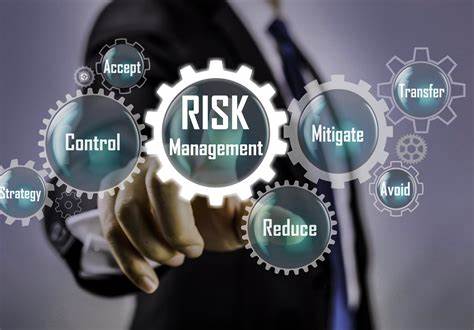
Mitigating Potential Risks and Ensuring Safety Measures in Various Industries
Introduction
The topic of potential risks and safety measures is of utmost importance in today’s world. With the increasing complexity of industries and the potential hazards they entail, it has become crucial to understand and implement effective safety measures to mitigate these risks. This article explores the historical background, key concepts, and main discussion points related to potential risks and safety measures. By delving into case studies, current trends, challenges, and the future outlook, we aim to highlight the significance and importance of addressing potential risks and implementing safety measures.
Historical Background
To understand the context of potential risks and safety measures, it is essential to examine the historical background. Throughout history, various events and milestones have shaped the way industries approach risk management. From industrial accidents to environmental disasters, each incident has brought to light the importance of proactive safety measures. These events have led to the establishment of regulations and standards that aim to prevent similar incidents in the future.
Key Concepts and Definitions
To lay a foundation for the discussion, it is crucial to define key terms such as risk, safety measures, hazard, and more. Risk refers to the potential for an event or action to have negative consequences. Safety measures encompass the strategies and protocols implemented to prevent or mitigate those risks. Understanding these concepts will help in grasping the significance of addressing potential risks and ensuring safety measures in various industries.
Main Discussion Points
Types of Potential Risks:
Industries face various types of risks, including physical, financial, and environmental risks. Physical risks involve potential harm to individuals or damage to property. Financial risks pertain to potential losses or adverse impacts on an organization’s financial stability. Environmental risks encompass potential threats to the natural environment. By understanding the consequences of each type of risk, industries can devise appropriate strategies to mitigate them.
Importance of Safety Measures:
Implementing safety measures is of utmost importance in any industry. These measures not only protect employees and stakeholders but also safeguard the overall operations and reputation of the organization. By adhering to safety protocols, organizations can prevent potential risks and ensure a safe working environment. Effective safety measures also contribute to increased productivity and employee satisfaction.
The Role of Risk Assessment:
Risk assessment is a critical process in identifying, analyzing, and evaluating potential risks. It involves assessing the likelihood and impact of each risk to determine the level of priority and necessary mitigation measures. Conducting risk assessments enables industries to proactively address potential risks and allocate appropriate resources to prevent or minimize their impact. Industries ranging from construction to healthcare heavily rely on risk assessments to ensure safety.
Employee Training and Safety Protocols
Training employees on safety measures is paramount to mitigating potential risks. By providing comprehensive training programs, organizations equip their employees with the necessary knowledge and skills to identify and address potential risks. Additionally, safety protocols play a crucial role in establishing guidelines and procedures to prevent accidents and ensure a safe working environment. Many industries, such as manufacturing and aviation, have effective employee training programs and safety protocols in place.
Case Studies or Examples
Real-world examples and case studies provide valuable insights into potential risks and safety measures. By analyzing the outcomes and lessons learned from these examples, industries can gain a deeper understanding of effective risk management strategies. Case studies range from major industrial accidents to successful implementation of safety measures, showcasing the importance of proactive risk mitigation.
Current Trends or Developments
In the ever-evolving landscape of potential risks and safety measures, it is vital to stay updated on the latest trends and developments. Technologies such as artificial intelligence, Internet of Things, and predictive analytics are being implemented to address potential risks. Strategies like remote monitoring and virtual reality are also gaining traction in ensuring safety. By discussing these trends, industries can incorporate new approaches to risk management.
Challenges or Controversies
Addressing potential risks and implementing safety measures is not without challenges and controversies. Different viewpoints and approaches exist when it comes to managing potential risks, leading to debates over regulations and industry standards. It is essential to explore these challenges and controversies to gain a comprehensive understanding of the field.
Future Outlook
Looking ahead, potential risks and safety measures will continue to evolve. Advancements in technology, changing regulations, and emerging industries will shape the future implications of risk management. It is essential to speculate on potential advancements and changes in the field to ensure organizations stay ahead of potential risks and embrace new strategies.
Conclusion
In conclusion, the significance of addressing potential risks and implementing safety measures cannot be undermined. By understanding the historical background, key concepts, and main discussion points, industries can navigate the complex landscape of risk management effectively. Through case studies, analyzing current trends, and addressing challenges, organizations can proactively mitigate potential risks and ensure the safety of employees, stakeholders, and the overall operations.